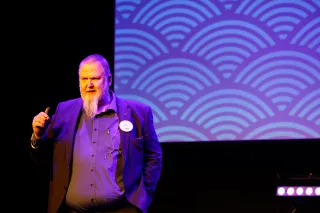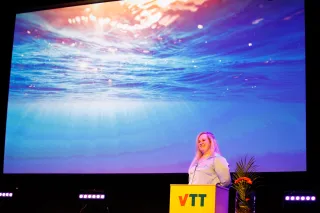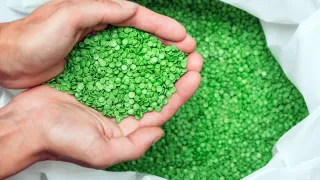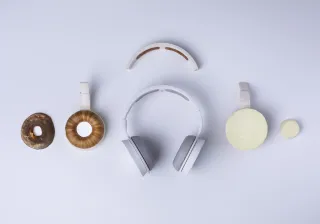"What should I do if my bath overflows? Turn off the tap, of course."
Ali Harlin, a Research Professor at VTT, began his presentation by comparing the current availability of carbons to an overflowing bath. There are plenty of carbons above ground – digging them up is no longer sustainable.
Carbon-neutral materials can be obtained in three ways:
- By replacing fossil carbons with, say, recycled or bio-based ones
- By recovering existing carbons
- By introducing higher performance to the equation, i.e. by developing better design methods and a new kind of trade in materials.

Creating added value is the key issue
Harlin believes that creating added value is the key to everything. We would have sufficient resources if we could only increase their value, i.e. do things better than before.
Textile recycling is a good example of the creation of added value and carbon recovery: buyers of textile products can repair, rent or sell the garments they use, use them as a material for handicrafts or new products, or take them to recycling stations. Recycled textiles can be used as an industrial raw material. When mechanically or chemically processed, they can be used to produce yarn, fabrics and clothing that eventually end up back in stores and consumers' shopping bags.
Digitalisation is the key
Parts of the materials value chain have already been digitalised, but not all of them have been brought together. Digitalisation can form the basis of new business models and materials can begin being sold as services.
Harlin called for a transition in recycling from mass processing to an object-based economy. If each recyclable object is identified across the recycling period, millions of tons could be recycled with precision.

Case: Better than plastic!
Research Scientist Anna Tenhunen introduced a future packaging solution developed by VTT, which resembles plastic but is 100 per cent bio-based and renewable.
This transparent, multi-layered packaging material made from cellulose is recyclable and suitable for the packaging of foodstuffs that are sensitive to moisture and oxygen.
The new packaging material was one of five winners of the Circular Materials Challenge 2018 arranged by the Ellen MacArthur Foundation. It also won the Ecopack Challenge 2018 competition, organised in cooperation with Marks & Spencer, at the Packaging Innovations Fair. The winning streak continued at the Sustainability Awards 2018 contest arranged by Packaging Europe, where VTT was the winner in the bio-based packaging category. VTT is seeking partners for the commercialisation of the material.




